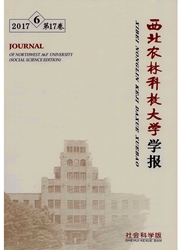

 中文摘要:
中文摘要:
通过分位数回归方法(QR)对支农贷款影响农户收入的机制与路径进行研究,并运用倾向得分匹配方法(PSM)对结果的稳健性进行了检验。研究发现:对于高收入农户,支农贷款通过增加其经营性收入而使总收入增加;对于中等收入农户,支农贷款虽然增加了其牧渔林业收入,但是更大程度减少了经营性收入,总收入表现为下降;对于低收入农户,支农贷款仅被用于生活性消费支出,总收入水平下降。这说明,即使面临相同的融资机会,农户的增收能力却各有不同。因此,要想缓解农户收入的内部不平等问题,还需要从实施瞄准性的金融扶持政策、提高农户生产率水平和持续拓宽农村融资渠道几个方面来考虑。
 英文摘要:
英文摘要:
This paper analyzes how three agriculture loans influence rural households' income by quantile regression(QR)and propensity score matching(PSM)methods.The main results are as follows:First,for high income households,agriculture loans increase their total income through increasing operating income.Second,for middle-income households,despite agriculture loans increasing their fishery and forestry income,their operating income reduces in a larger degree,so the total income declines.Third,for low income households,agriculture loans are only used for household consumption expenditure,and gross income decreases.So even facing the same financing opportunities,rural households have different income improving abilities.Therefore,in order to solve the problem of rural household income inequality,it needs to consider the aspects of implementing targeted financial support policies,improving rural households' productivity and broadening the financial channels for rural areas.
 同期刊论文项目
同期刊论文项目
 同项目期刊论文
同项目期刊论文
 期刊信息
期刊信息
